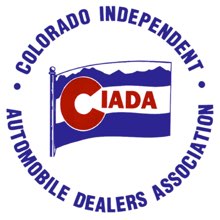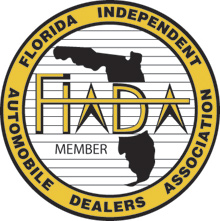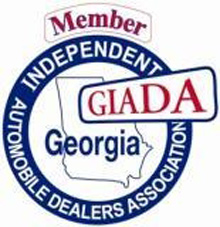As the pandemic clears, probably the biggest concern for automobile dealers and finance companies is what does the future hold regarding capital. Do I have sufficient capital on hand or do I have additional capital available or a plan to obtain additional capital? After many years in the automobile business, I have found working capital to be the reoccurring issue that has to be dealt with before taking any other steps.
Your capital needs will dictate your ability to survive. The first step is to evaluate your immediate capital needs for operating expenses, inventory needed to be competitive and your ability to purchase additional receivables if you are a finance company. It’s important to set a game plan that will be conservative and mitigate the risk to your cash flow. You should set reasonable expectations not to be exceeded even if things seem to be going well at that moment. Most car dealer’s needs are floor-planning loans and warehousing or receivable lines of credit. Let’s assume you are financing your sales as a captive; you are going to want to use your availability of cash to fund your inventory and receivables. In the 90’s, I used all the available cash and credit I had to reach a maximum receivable base that I would then sell off in batches to pay down either the line of credit or my floor-planner. However, I rarely increased the amount that I sold so therefore I was able to age my portfolio. In between selling off receivables my monthly cash flow would improve allowing me to gain more receivables or purchase inventory unencumbered. I continued to sell receivables to pay down my line of credit. These sales positioned me with a cash flow that allowed me to fund my operation and maintain a level portfolio.
There is a true need for dealers to expand their working capital and have inventory paid for or a larger receivable base so that their cash flow becomes their operating cash. The more cash I used to put into my business, the larger the receivables and in turn the larger the cash flow. With the high cost of some credit facilities this method should be pursued in order to balance expenses and portfolios.
As you decide to grow past your original goals, applying this same method will allow you to own more of your receivables and keep peace of mind as well as lowering your stress levels. A car dealer once told me “carrying debt is like running on a soccer ball, it’s not a matter of you falling off, just when”.
Capital or lack of capital is the most important part of any plan to go forward. There are many other challenges we will all face to recover back to pre-pandemic levels. It will take time and patience and the willingness to sacrifice immediate needs for long term gains. My personal opinion is I have never seen an environment that can be so beneficial to those that manage their operation well.
By now we have all felt the affects the pandemic has caused to our businesses and how we run them. During my four decades in the credit business, I have found that somewhere between seven and ten years there is a reset to the changing environments for capital. Historically, it was typically market adjustments versus the major reset the pandemic has caused. I still hear from dealers that they cannot wait to get their sales back to the level prior to the pandemic. But let’s be realistic. Most likely a return to prior levels will not occur for some time. Therefore, your current capital needs will probably be different than they were a year ago.
Banks and finance companies will begin to make changes in the way they do business. A quick change will be how they structure their point of sale operations whether requiring higher credit scores, lesser advance on contracts or higher down payments. Banks that provide lender to lender credit lines will begin to tighten borrowing requirements. Changes may include increased covenant restrictions, reduction in advance amounts or credit line limits or even discontinuing lines of credit. This period can be very stressful or can be an opportunity to improve your operation. I mentioned in the prior article how to survive not how to be successful. I survived every one of the challenges listed above at some point over the last forty years because I was able to build a solid cash flow from my receivables. My cash flow increased through every one of these cycles and I was able to adapt to all of the changes made in the capital market.
You cannot control banks, finance companies, floor planners, or point of sale companies. Their operation will change so you need to be able to change with that environment. If you are currently carrying receivables you have two assets: cash that is being paid to you by those receivables and the future cash that will be paid by those receivables. There are strong indications that the problems the pandemic has caused will continue until the third quarter 2021 so relying on your receivables as a marketable asset may be your best opportunity for capital.
We are currently at the stage in the pandemic where your receivables could be in the best shape you have seen in many years due to the lack of new business and your problem accounts have been dealt with. By now you should be at a predictable receivable base that you are comfortable with.
Now is the time to determine the amount of cash needed to pay your operating expenses, purchase new inventory and recondition your vehicles for future sales. Then decide the amount of performing receivable balances it takes to fund those needs. Any receivables over that number become assets to help you meet your capital needs going forward. Selling those receivables will allow you to purchase inventory without having to use a floor plan, to reduce debt owed to banks which should free up space on your credit line or to pay down high interest rate credit lines to a number that flows better in your operation. With the reduced availability to point of sale companies or the restrictions that are now being placed by those companies, you want to be sure to only sell off the receivables over the amount needed to maintain your operation. This may require selling every couple of months, two or three times a year or even only once year. Aging a receivable base will only increase its value. If your credit line is based on a percentage of your receivables, selling receivables will help establish a value to your portfolio and show a bank or lender their marketability. Additionally, selling receivables allows you to reduce your default rate by sharing that risk with another company.
It’s very important that the cash from selling receivables is put back into producing assets. The receivables you carry between sales are producing assets. In time those receivables will allow you to carry more receivables which will in turn improve your cash flow and reduce your dependency on borrowed funds.
As your receivables grow, your increased cash flow will create opportunities to enhance your operations by using your cash flow instead of borrowed funds to purchase property, better inventory, or add additional locations. An added benefit to consistent increasing cash flow through receivables is you will have the ability to obtain more favorable and secure credit lines. As always, bankers like to loan money to people who don’t need it and not to companies that are struggling to make an operation successful.
We are seeing a pattern of lenders reducing advance rates based upon acceptable receivables. Plus they are not in a position to raise credit lines due to the uncertainty of the market. Factor in the lack of a stimulus program and your ability to generate new originations will be harder to accomplish. With all of this uncertainty of credit lines tied to receivables, a flexible plan is needed.
Let’s consider a company utilizing a credit line that is based on an advance rate on receivables or a warehouse line of credit. In the past, you were able to rely on the availability on this line to expand your receivable base. In the current environment, you should be planning for slow growth that will advance to a faster growth as the market corrects. This is a good time to use your receivables, which you are in control of, as your capital. By now, your receivables have aged and your weaker accounts have been identified. You should talk with your lender about your strategy to use your receivables to help rebuild your company. You will not be able to do what I am suggesting without their support.
If you are a car dealer with a captive, you first need to determine your true cash in a vehicle. This amount will be the purchase price of the vehicle including auction or floor plan fees plus any improvements and fees or taxes due on the sale of said vehicle less the down payment. You will also have the cash collected from payments on these accounts. Using these variables you can come up with your cash invested in that car. The total should be far less than the principal balance on that receivable. This is the asset that is marketable to bulk receivable purchasing companies or investors.
Your next step would be to have your portfolio evaluated by and receive an offer from a bulk receivable purchasing company. Your buy rate from a purchaser should be greater than the rate being advanced on your credit line. This will provide enough cash to pay off those receivables with the lender and further reduce your balance allowing more credit availability. The rates we currently see being offered in the marketplace are between 70% and 85% of principal. Receivables with better collateral could bring higher than 85%. The statement I hear from dealers all the time is “I have the best receivables and they all pay me.” I can assure you these values have been consistently right in portfolios that are successful for as long as I have been doing this.
What separates the value from 70% to 85%? There are several factors including the term of the loan, the number of payments paid, the timeliness of said payments, the proven ability to pay, and the loan-to-value rate. One other very important factor is the evaluation of the dealership and their operational plan. This evaluation includes reviewing the dealer’s website and any complaints against the dealer.
Once you have an estimated purchase ratio, you can determine your individual cash return. To do this, take the true cash invested as previously defined and subtract the down payment and any payments made on the account. Calculate the cash advance from the sale using the expected purchase ratio against the principal balance. Subtract the net cash invested from the purchase price to get your individual net cash gain. Some vehicles will have a better gain than others but to evaluate the portfolio correctly you should use the average of the entire portfolio being sold.
Let’s assume you sold off a portfolio and have paid off your lender or floor planner. You have reduced any future losses on those receivables. You have paid down your credit line or floor plan thereby reducing interest and operating costs. You should have received a gain in cash that will allow you to purchase more vehicles and carry more receivables. Future portfolio sales will then eliminate more debt and increase unencumbered assets. Additionally, you demonstrated to your lender the value and marketability of your receivables. This plan will be your best opportunity to put yourself in a better financial position and allow you to become less dependent on borrowed funds.
I would encourage you to maximize your purchase price by maintaining reasonable LTV ratios, obtaining sufficient down payments, developing good customer habits while aging the account such as paying on time and encouraging payment methods other than cash at the lot, and keeping accurate customer data such as addresses, jobs and phone numbers on accounts. Additionally, there are items that a purchaser is likely to require and it would be beneficial for you to obtain them at the time of sale. Examples of these items are a credit application, proof of income, proof of insurance and a driver’s license.
Most companies will have a thirty to sixty day recourse period. You want to do everything you can during this recourse period to not have to repurchase any accounts. Once the accounts have been transferred to the purchaser, good consistent communications between the two of you will help with the transition and should minimize the number of accounts need to be repurchased. Additionally, your success will be greater if you can answer yes to this question: If I am unable to sell this receivable, am I willing to carry this account to the completion of their contract?
Another idea that could make your receivables more marketable is to have a third party servicing company service your accounts from conception. Some servicing companies offer to purchase accounts after a period of time or will work with other receivable purchasing companies on your behalf. Having a third party servicer for your portfolio will allow you to focus more on your business of selling cars and less on collections and the regulations required.
I believe if you use the strategies referenced in these articles along with the opportunity I believe will be available over the next several years you will be able to survive the next downturn easier.
By: Bill Ward
President/CEO
Sterling Credit Corp.


